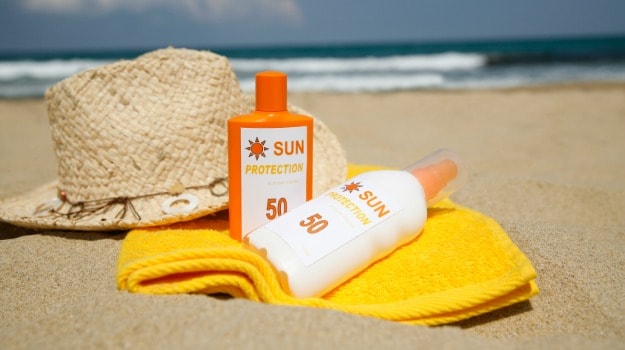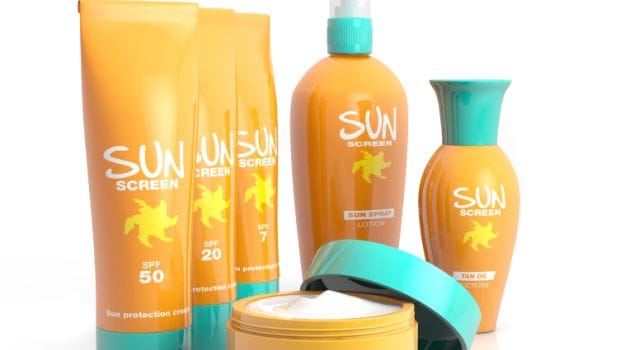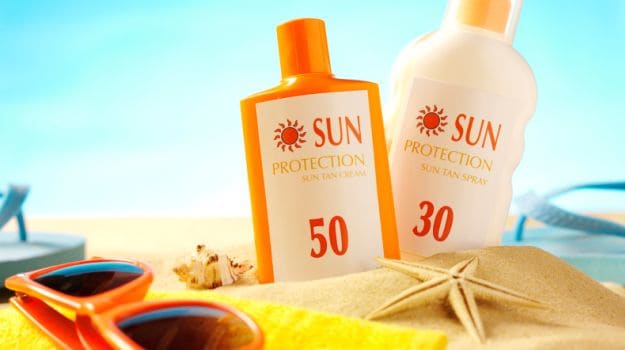Sun Protection Factor, more popularly known as SPF, is a measure of how well a sunscreen can protect the skin from harmful UVB radiations. Experimentally, it is the ratio of amount of light that induces redness in sunscreen-protected skin, to the amount of light that induces redness in unprotected skin.Harmful Effects of UV RaysSunscreens should not be perceived as a cosmetic but as an essential to protect one's skin. Thus, any individual exposing their skin to UV radiations through direct sunlight, especially in a tropical country such as India, requires a sunscreen. The numerous toxic effects of UV from natural sunlight and therapeutic artificial lamps are a major concern for human health. Some of the acute effects of UV irradiation on normal human skin comprise sunburn inflammation (erythema), tanning and local or systemic immunosuppression. Tanning is a process whereby skin colour is darkened due to UV exposure. UV radiations cause DNA damage and oxidative stress which induce melanin production and its redistribution thus leading to darker skin colour.
Decoding Percentage of SPF Factor in Your SunscreenSPF is not directly related to time of solar exposure but to amount of solar exposure. Also, SPF and percentage of UV ray protection does not follow a linear curve. A compilation of the same is as given below: As the above table indicates, it has been evaluated that SPF 30 blocks 97% UVB rays which is ideal for protection from harmful rays when exposing skin to the sun on a normal sunny day. A higher SPF value renders better skin protection.It is also important to protect the skin against both UVA as well as UVB radiations. This can be accomplished by the use of a broad spectrum sunscreen SPF which offers protection against short and long wavelength UV radiations. A balanced use of both physical and chemical sunscreens in a formulation can help render this protection.
As the above table indicates, it has been evaluated that SPF 30 blocks 97% UVB rays which is ideal for protection from harmful rays when exposing skin to the sun on a normal sunny day. A higher SPF value renders better skin protection.It is also important to protect the skin against both UVA as well as UVB radiations. This can be accomplished by the use of a broad spectrum sunscreen SPF which offers protection against short and long wavelength UV radiations. A balanced use of both physical and chemical sunscreens in a formulation can help render this protection.
How to Apply SunscreenThe amount of sunscreen applied is directly proportional to the amount of solar radiation absorbed. In other words, more sunscreen results in less solar energy absorption. Since sunscreens may wear off and become less effective with time, the frequency with which they are reapplied has a direct implication to limiting absorption of solar radiation. The reapplication frequency is also influenced by the various activities that one may be involved in. For example, while swimming the probability of sunscreen application may be more frequent because water may wash the sunscreen from the body. High levels of physical activity require more frequent reapplication because the activity may physically rub off the sunscreen and heavy sweating may wash off the sunscreen. It is thus necessary that more frequent reapplication be followed to decrease absorption of solar radiation.
At this time of the year, when the summer sun is scorching above us, it is essential to protect our skin from the hazardous effects of UV rays. Take time and take care.Disclaimer:
The opinions expressed within this article are the personal opinions of the author. NDTV is not responsible for the accuracy, completeness, suitability, or validity of any information on this article. All information is provided on an as-is basis. The information, facts or opinions appearing in the article do not reflect the views of NDTV and NDTV does not assume any responsibility or liability for the same.

Sunlight is made up of harmful UV radiations of different wavelengths. Long wavelength radiations comprise the UVA rays (320-400nm) while short wavelength radiations comprise the UVB radiations (290-320nm). UVA rays account for 90 to 95% of UV radiation that reaches the earth. While UVB makes up only 5-10% of solar radiation, its high energy damages surface epidermal layers and causes sunburn. UVA rays penetrate deep into the dermis and primarily cause skin aging. Both radiations however can cause skin cancer. By damaging the skin's cellular DNA, excessive UV radiation produces genetic mutations that can lead to skin cancer.
Decoding Percentage of SPF Factor in Your SunscreenSPF is not directly related to time of solar exposure but to amount of solar exposure. Also, SPF and percentage of UV ray protection does not follow a linear curve. A compilation of the same is as given below:
 As the above table indicates, it has been evaluated that SPF 30 blocks 97% UVB rays which is ideal for protection from harmful rays when exposing skin to the sun on a normal sunny day. A higher SPF value renders better skin protection.It is also important to protect the skin against both UVA as well as UVB radiations. This can be accomplished by the use of a broad spectrum sunscreen SPF which offers protection against short and long wavelength UV radiations. A balanced use of both physical and chemical sunscreens in a formulation can help render this protection.
As the above table indicates, it has been evaluated that SPF 30 blocks 97% UVB rays which is ideal for protection from harmful rays when exposing skin to the sun on a normal sunny day. A higher SPF value renders better skin protection.It is also important to protect the skin against both UVA as well as UVB radiations. This can be accomplished by the use of a broad spectrum sunscreen SPF which offers protection against short and long wavelength UV radiations. A balanced use of both physical and chemical sunscreens in a formulation can help render this protection.
How to Apply SunscreenThe amount of sunscreen applied is directly proportional to the amount of solar radiation absorbed. In other words, more sunscreen results in less solar energy absorption. Since sunscreens may wear off and become less effective with time, the frequency with which they are reapplied has a direct implication to limiting absorption of solar radiation. The reapplication frequency is also influenced by the various activities that one may be involved in. For example, while swimming the probability of sunscreen application may be more frequent because water may wash the sunscreen from the body. High levels of physical activity require more frequent reapplication because the activity may physically rub off the sunscreen and heavy sweating may wash off the sunscreen. It is thus necessary that more frequent reapplication be followed to decrease absorption of solar radiation.

At this time of the year, when the summer sun is scorching above us, it is essential to protect our skin from the hazardous effects of UV rays. Take time and take care.Disclaimer:
The opinions expressed within this article are the personal opinions of the author. NDTV is not responsible for the accuracy, completeness, suitability, or validity of any information on this article. All information is provided on an as-is basis. The information, facts or opinions appearing in the article do not reflect the views of NDTV and NDTV does not assume any responsibility or liability for the same.
Advertisement





